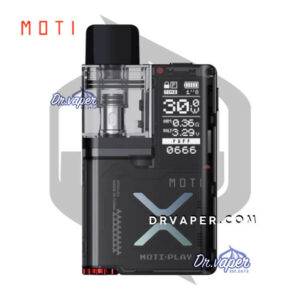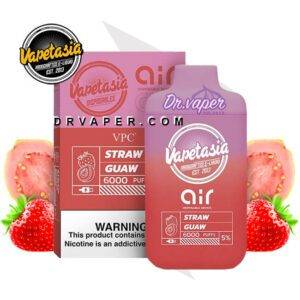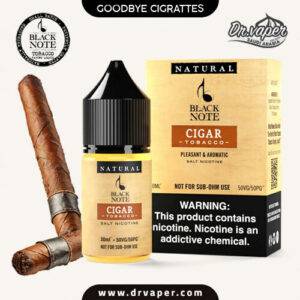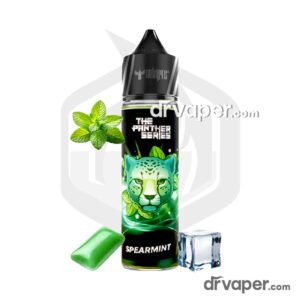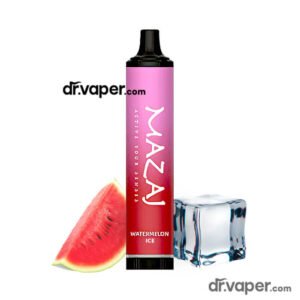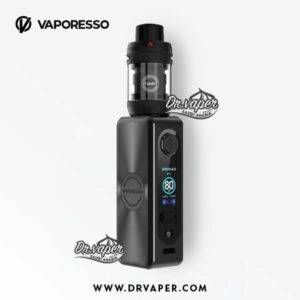Free delivery for orders above 500 SAR in Riyadh
WEEKLY VAPE OFFER
ر.س95.00 Original price was: ر.س95.00.ر.س45.00Current price is: ر.س45.00.
SOLD: 101 Item
All Products
BEST SELLER IN SAUDI VAPE SHOP
NEW ARRIVAL DISPOSABLES & FLAVORS
SHOP FROM YOUR FAVORITE VAPE SHOP دكتور فيب ستور
In recent years, Saudi Arabia has witnessed a significant transformation in the perception of smoking, with the widespread adoption of vaping devices as a healthier and less harmful alternative to traditional smoking. Vaping offers a modern and enjoyable experience, featuring a vast array of flavors and advanced technologies that cater to users’ needs, whether they are beginners or seasoned vaping enthusiasts.
Why is Vaping the Better Choice?
- Less Harmful: Vaping is considered a safer alternative with significantly lower levels of harmful substances compared to traditional cigarettes.
- Diverse Flavors: It provides an endless variety of flavors to suit every taste.
- Cost-Effective: Over time, vaping can be more economical than consistently purchasing traditional cigarettes.
- Easy Accessibility: In Saudi Arabia, vaping products are readily available through trusted sources like Dr. Vaper, a certified retailer specializing in authentic, safe, and high-quality vaping options.
Dr. Vaper: A Leading Pioneer in Vaping Excellence in Saudi Arabia Established in 2013, Dr. Vaper has become the go-to destination for vaping enthusiasts seeking quality and distinction. The store stands out by offering a wide range of vaping devices and e-liquids tailored to suit every taste.
What Sets DrVaper Apart?
- Extensive Experience: With over a decade of expertise, Dr. Vaper guarantees reliable and safe products.
- Wide Range of Flavors: The store provides a diverse selection of flavors, from classic to innovative, catering to all preferences.
- Customer Support: A professional team offers guidance and advice to help users choose the most suitable products.
- Commitment to Quality: Dr. Vaper ensures the availability of products from globally trusted and certified brands.
- Fast Delivery: The store offers quick delivery services across the Kingdom, ensuring a seamless and convenient shopping experience.
shop now from the best vape store in riyadh and jeddah and dammam
Always Striving to Be the First Choice for an Exceptional Vaping Experience
Dr Vape Is best vape shop
If you’re in Saudi Arabia and looking for the best products and services in the vaping world, Dr. Vaper is your ultimate destination.
Discover the difference today and join thousands of customers who trust the quality and excellence of Dr. Vaper’s products!
With increasing awareness of the harms of traditional smoking, vaping (e-cigarettes) has emerged as a popular choice for individuals seeking a healthier and safer option. Vaping offers a modern experience that reduces health risks while providing additional benefits compared to conventional cigarettes.
Benefits of Vaping Over Smoking
- Reduced Harmful Substances:
Vaping uses e-liquids free from tar and carbon monoxide, significantly lowering health risks related to respiratory and heart diseases. - Flexible Nicotine Levels:
Users can select their preferred nicotine levels, enabling a gradual reduction in dependency. - Rich Flavor Experience:
Vaping offers a diverse range of flavors, including fruits, desserts, and even tobacco, creating a personalized and enjoyable experience for every individual. - Lower Environmental Impact:
Unlike traditional cigarettes, which produce waste such as cigarette butts and ash, vaping has a significantly smaller environmental footprint.
Is Vaping the Best Choice?
While vaping is a less harmful alternative to traditional smoking, it is recommended as a transitional tool to quit smoking entirely. Current studies support its potential to reduce health risks and provide a modern solution for smokers.
Switch to Vaping for Better Health
If you’re looking for a way to minimize the harms of traditional smoking, vaping offers an innovative alternative that combines enjoyment with relative safety.
Take the first step toward a healthier lifestyle today—try vaping and embrace the change!
Juul Virginia Tobacco Pods, part of the broader nicotine salt vaping trend, are designed as less harmful alternatives to traditional cigarettes. Vaping products, including pods like Juul, aim to minimize health risks by eliminating the combustion process inherent to smoking. This fundamental shift has positioned vaping as a potentially lifesaving option for smokers, with studies suggesting it is at least 90% safer than traditional smoking.
Addressing Misconceptions
A study led by 15 former presidents of the Society for Research on Nicotine and Tobacco revealed that long-term smokers are often misinformed about the relative risks of vaping and smoking. These researchers emphasized that while youth-related concerns deserve attention, the millions of adult smokers at immediate risk of smoking-related diseases should be the primary focus of public health initiatives.
Components of E-Cigarettes
E-cigarettes, including Juul and similar systems, typically consist of the following:
- A Cartridge: Filled with e-liquid containing nicotine salts, flavorings, and a base of propylene glycol (PG) or vegetable glycerin (VG).
- Heating Element (Coil): Converts the liquid into vapor for inhalation.
- Rechargeable Battery: Powers the device for sustained use.
This design eliminates tar and carbon monoxide, two major contributors to smoking-related harm. Instead, vaping generates aerosol, which may carry fewer long-term health risks compared to tobacco smoke.
The Role of E-Liquid Flavors
E-liquid flavors play a critical role in vaping’s appeal but have raised safety concerns. While many flavoring compounds were initially approved for ingestion, their effects when inhaled remain under-researched. For instance, diacetyl, a chemical linked to “popcorn lung” when inhaled in industrial settings, has been significantly reduced or eliminated by reputable manufacturers in their formulations.
Potential Risks of Vaping
Lung Health:
- Vaping does not involve the harmful particulates or carcinogens found in cigarette smoke, but it can still irritate the airways. Long-term effects of inhaling PG and VG are not fully understood, although current research suggests minimal immediate risk.
Oral Health:
- Preliminary studies show that vaping has a negligible impact on the oral microbiome compared to smoking. However, excessive heat exposure could lead to minor conditions like nicotine stomatitis.
Battery Safety:
- Modern devices are designed to prevent the rare but catastrophic battery malfunctions seen with older or modified e-cigarettes.
Cancer Risk and Vaping
Studies indicate that vaping poses a significantly lower cancer risk compared to smoking. E-cigarette vapor contains fewer carcinogens at concentrations far below harmful levels. Research comparing vaping to smoking suggests the risk of cancer from vaping is less than 1% of that from smoking.
Formaldehyde in E-Cigarettes
Concerns about formaldehyde production during vaping were initially sparked by studies using unrealistic conditions, such as overheating the device to levels no user would tolerate. Under standard usage, formaldehyde emissions are negligible and comparable to background levels found in everyday environments.
Public Health Endorsements
Public Health England (PHE) has consistently supported vaping as a harm reduction tool, stating that it is 95% safer than smoking. This endorsement reflects vaping’s role as a less harmful alternative, particularly for smokers unable to quit through other means.
Conclusion
While vaping is not entirely risk-free, its health risks are significantly lower than those of smoking. Juul Virginia Tobacco Pods and similar products provide adult smokers with a viable alternative to traditional cigarettes, potentially reducing the prevalence of smoking-related diseases. Further research is necessary to fully understand the long-term effects of vaping, particularly concerning flavorings and other e-liquid components.
Electronic Smoke with a Unique Experience
Discover a new world of distinctive flavors and electronic experiences designed to suit all tastes. Whether you’re looking for refreshing fruit blends or unique mixes for electronic smoking, you’ll find everything you need in one place. We offer the latest technology and premium quality with fast shipping options to meet your needs anytime, anywhere within the Kingdom. Immerse yourself in an unparalleled electronic smoking experience that combines elegance and comfort.
Disposables vape pods have become one of the most popular choices in Saudi Arabia, offering a convenient and easy experience for both new users and seasoned vapers alike. These devices are designed to be lightweight, simple, and ready to use straight out of the package, making them an ideal choice for those seeking a hassle-free vaping experience.
Advantages of Disposable Vape Pods
- Ease of Use:
Ready-to-use pods come pre-charged and pre-filled with e-liquid, making them perfect for immediate use without any complex setup. - Variety of Flavors:
Ready pods offer a wide range of flavors, from refreshing fruit options to classic tobacco tastes, catering to all preferences. - Compact and Lightweight Design:
These vape pods are small and easy to carry, making them ideal for on-the-go use, whether traveling or anytime you need a portable option. - Beginner-Friendly:
With their simple design, ready-to-use pods are the perfect choice for newcomers who want to try vaping for the first time.
Best Disposable Vape Pods in Saudi Arabia
- Vape Bar:
Features: Offers a variety of flavors and high quality in every puff, with a sleek and comfortable design.
Puff Count: Up to 1,500 puffs per device.
Target Audience: Lovers of unique flavors such as tropical fruits and desserts. - Elf Bar:
Features: One of the most popular brands, known for its high-quality e-liquid and durable device.
Puff Count: Ranges from 600 to 2,500 puffs, depending on the model.
Target Audience: Users seeking both traditional and modern flavors. - Smok Solus:
Features: A small device with technology that delivers a strong flavor with each puff.
Puff Count: Around 600 puffs.
Target Audience: Fans of stylish designs and high performance. - RELX Infinity:
Features: Advanced system with anti-leak technology and multiple flavor options.
Puff Count: Depends on the number of pods used.
Target Audience: Users looking for a professional-grade experience. - Geek Bar:
Features: A simple device with a variety of delicious flavors like iced grape and strawberry.
Puff Count: Up to 1,500 puffs.
Target Audience: Those looking for a perfect blend of performance and flavor.
Tips for Choosing the Best Disposables Vape Pod
- Check the Puff Count: Choose the device that suits your daily needs.
- Choose Your Flavor Carefully: Experiment with different flavors to find the one that suits you best.
- Quality First: Ensure you purchase from trusted stores to guarantee quality and safety.
- Affordable Price: Choose a device that offers a balance between price and puff count.
Disposables Vape Pods: The Modern Choice for Vape Enthusiasts
In Saudi Arabia, Disposables vape pods have become the first choice for users seeking a comfortable and easy experience. With a wide range of options and high-quality products available in the market, you can now enjoy a unique vaping experience tailored to your needs.
Start today and discover the best Disposable vape pods that meet your expectations!
What is Coil and Pod Resistance?
Resistance (Ohm) is a measure of how difficult it is for electrical current to pass through the coil. It is measured in Ohms (Ω) and directly affects the amount of vapor, flavor, and temperature of the puff.
Types of Coil Resistance:
- Low Resistance (Sub-Ohm): Less than 1.0 Ohm
- Ideal For: Producing large amounts of vapor.
- Requires: Higher wattage and e-liquids with a high vegetable glycerin (VG) content.
- High Resistance (Mouth-to-Lung): 1.0 Ohm or higher
- Ideal For: A traditional smoking-like draw (MTL).
- Requires: Lower wattage and e-liquids with a higher propylene glycol (PG) content.
Appropriate Wattage for Each Resistance
Choosing the right wattage depends on the coil’s resistance and the type of experience you’re looking for.
Recommended Wattage Chart:
| Resistance | Recommended Wattage | Optimal Experience |
|---|---|---|
| 0.15 – 0.3 Ω | 40 – 90 watts | Dense vapor production and DL (Direct Lung) draw |
| 0.3 – 0.5 Ω | 20 – 40 watts | A balance between vapor and flavor |
| 0.8 – 1.2 Ω | 10 – 20 watts | Traditional MTL draw with concentrated flavor |
| 1.2 Ω or higher | 8 – 15 watts | Strong flavor and a draw similar to smoking |
Note: Always check the manufacturer’s recommendations for the device and coil to ensure optimal performance.
Most Popular Pods and Coils in Vaping
Most Popular Pods:
- SMOK Nord:
- Supports multiple coils for both low and high resistance.
- Suitable for both beginners and professionals.
- Voopoo Vinci Pod Coil:
- An advanced pod system offering excellent performance with a wide range of coil options.
- Caliburn G Coil:
- Known for its excellent performance and strong flavor.
- Aspire Flexus:
- A sleek design with coils that support both MTL and RDL (Restricted Direct Lung) experiences.
Most Popular Coils:
- Mesh Coils:
- Even heat distribution and dense vapor production.
- Ideal for DL experiences.
- Ceramic Coils:
- Provides a pure flavor and lasts longer.
- Suitable for nicotine salt e-liquids.
- Kanthal Coils:
- The most common coils, known for easy installation and control.
- Clapton Coils:
- Designed to enhance flavor and vapor with a larger heating surface.
Tips for Choosing the Right Coil and Pod
- Choose the resistance based on your preferred draw type (DL or MTL).
- Use e-liquids that match the coil type (high VG for low resistance and high PG for high resistance).
- Replace coils regularly to ensure optimal performance and flavor.
Conclusion
Coil resistance and the appropriate wattage significantly affect the vaping experience. Whether you prefer dense vapor or concentrated flavor, selecting the right coil and pod helps you achieve the best experience possible. Choose wisely and enjoy the advanced world of vaping!
Vape Jeddah | Vape Riyadh Store | Vape Saudi for Authentic Electronic Shisha and Accessories
Vape Saudi offers authentic electronic shisha devices and accessories with the convenience of cash-on-delivery in Riyadh. Whether you’re looking for premium devices, flavors, or accessories, the platform ensures fast delivery across Riyadh and other regions in Saudi Arabia.
Your Destination for Electronic Shisha and Flavors
- Best Vape Devices and Accessories: Discover a wide range of electronic shisha devices and premium accessories tailored to meet your vaping needs.
- Authentic Products: The store guarantees 100% original electronic shisha products.
- Wide Variety of Flavors: From fruity blends to classic tobacco flavors, explore a diverse collection that satisfies all preferences.
What is an Electronic Shisha or Vape?
An electronic shisha, also referred to as an electronic cigarette, is a safer alternative to traditional smoking, reducing harm by at least 90%. These devices have revolutionized the tobacco industry since their introduction over a decade ago.
Components of Electronic Shisha Devices:
- Cartridge: Pre-filled with e-liquid, which contains nicotine, flavoring, and other chemicals.
- Heating Element (Coil): Heats the e-liquid to produce vapor.
- Rechargeable Battery: Powers the heating mechanism.
- Mouthpiece: Allows the user to inhale the vapor directly.
These devices are easily available in both physical and online stores, offering convenience and accessibility to users.
How Do Electronic Shisha Devices Work?
Electronic shisha devices work by heating e-liquids, producing aerosol instead of traditional smoke. This process eliminates tobacco combustion, which significantly reduces harmful respiratory effects.
Key Features of Electronic Shisha:
- Adjustable Nicotine Levels: Users can choose the nicotine content based on their preferences.
- Flavor Variety: Innovative flavors, from fruity to savory blends, have attracted many users.
- Reduced Harm: By eliminating tobacco combustion, these devices are considered less harmful.
The best store. I bought from you. Thank you. The flavors are excellent. I arranged the price from the top.

Fast delivery within Riyadh on the same day

I bought a special hookah and e-liquids, more progress

I bought the original disposable and its accessories and it was delicious.

They ship vape in JEDDAH city and its was fast delivery
Original Juul pods, excellent vape flavors, electronic hookah at competitive prices, thank you, purchased and evaluated
You must Buy from them, you will not regret it. I got excellent salt nicotine flavors from them and a new date.
What do you think of the Smok RPM ? I got it and I'm excited to try it.
Awesome electronic hookah especially the two apple flavor mood
Excellent Red Bull Disposable ,but its price is excellent compared to the number of draws
I have not seen a better store than this, much better than a hookah shop. Thank you, for being in our lives.
Beautiful and distinctive electronic disposable and wonderful puffs



